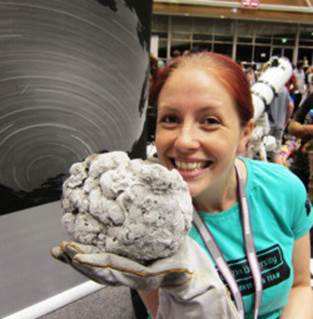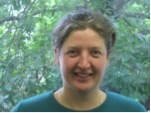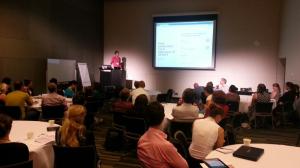
Gemma and her home-made comet starred in Astrofest tweets from former WA Chief Scientist Professor Lyn Beazley (@ChiefSci_WA)
There’s a lot of space and a lot of things in space out there – which means some potentially interesting finds by keen viewers of the stars. Why not bring them together?
Want some help scanning the skies over outback Australia for shooting stars? Crowdsource it! And while you’re at it, educate the crowd. That’s the bright idea behind Curtin University’s Fireballs in the Sky project.
This project will include ordinary people in the research process, improving their scientific literacy and especially their understanding of planetary research.
The long-term aim of the project is to bring citizen scientists, particularly in remote locations in Western and South Australia, into the Desert Fireball Network – an international scientific collaboration that uses a network of cameras in outback Australia to photograph the fall of meteorites, greatly increasing the chances of finding and recovering them for further investigation.
Gemma Mullaney, Geoscience Outreach Officer at Curtin University tells more about the accessibility and the research over on the Inspiring Australia website.
Visit the Fireballs in the Sky website to download the app – and find more updates at the Inspiring Australia website.



